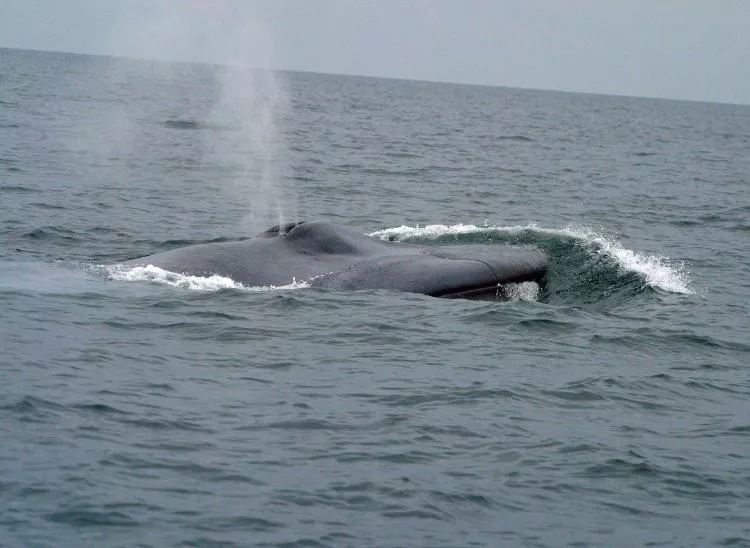Whale songs reveal existence of new blue whale population
A recently scientific paper reveals the existence of a new population of blue whales, based on its whale songs.
There are different populations of blue whales worldwide, and each can be identified by its own whale songs.
A new population has been identified based on its unique whale song, recorded in three locations: the Arabian Sea coast of Oman, the Chagos Archipelago in the central Indian Ocean, and Madagascar in the southwest Indian Ocean.
This discovery was reported in the journal Endangered Species Research.
The first recording was obtained in 2017 by Dr Salvatore Cerchio, Director of the African Aquatic Conservation Fund's Cetacean Program and a Visiting Scientist at the New England Aquarium. He had recorded it while conducting research on Omura’s whales in the Mozambique Channel off Madagascar.
Cerchio was also involved in the collection of acoustic recordings off the coast of Oman in the Arabian Sea, focusing on the Arabian Sea humpback whale. This is an ongoing collaboration between the Environment Society of Oman, Five Oceans Environmental Services LLC, Oman's Environment Authority and Oman's Ministry of Agriculture, Fisheries and Water Resources.
Same song
It turned out that the Oman recordings contained the same whale song, and they were even more prevalent off Oman than at Madagascar. It was then that the researchers realised that they had most likely found a population of blue whales in the western Indian Ocean that was not yet recognised.
"It was quite remarkable to find a whale song in your data that was completely unique, never before reported, and recognise it as a blue whale."
"With all that work on blue whale songs, to think there was a population out there that no one knew about until 2017, well, it kind of blows your mind," Cerchio said, in a ScienceDaily article.
The team reported their findings to the Scientific Committee of the International Whaling Commission (IWC) the following year.
Upon reading the report, Emmanuelle Leroy and Tracey Rogers of the University of New South Wales, in Sydney, Australia, realised that they too had recorded the same whale song—only theirs was recorded off the Chagos Archipelago when they were conducting their own acoustic research on blue whales in the Indian Ocean.
Thus, they contacted Cerchio, sharing their own findings.
Based on the data collected, the population appeared to spend most of its time in the northwestern Indian Ocean, in the Arabian Sea and to the west of the Chagos.
It has long been recognised that a unique blue whale population resides in the Northern Indian Ocean, but it was assumed that whales in the Arabian Sea belonged to the same population that has been studied off Sri Lanka and ranges into the southcentral Indian Ocean.
Different story
However, the songs tell a different story.
"Before our recording effort off Oman, there were no acoustic data from the Arabian Sea, and so the identity of that population of blue whales was initially just a guess," said Andrew Willson from Five Oceans Environmental Services LLC, who was responsible for the deployment of the recording units.
"Our work shows that there is a lot more to learn about these animals, and this is an urgent requirement in light of the wide range of threats to large whales related to expanding maritime industries in the region."



























